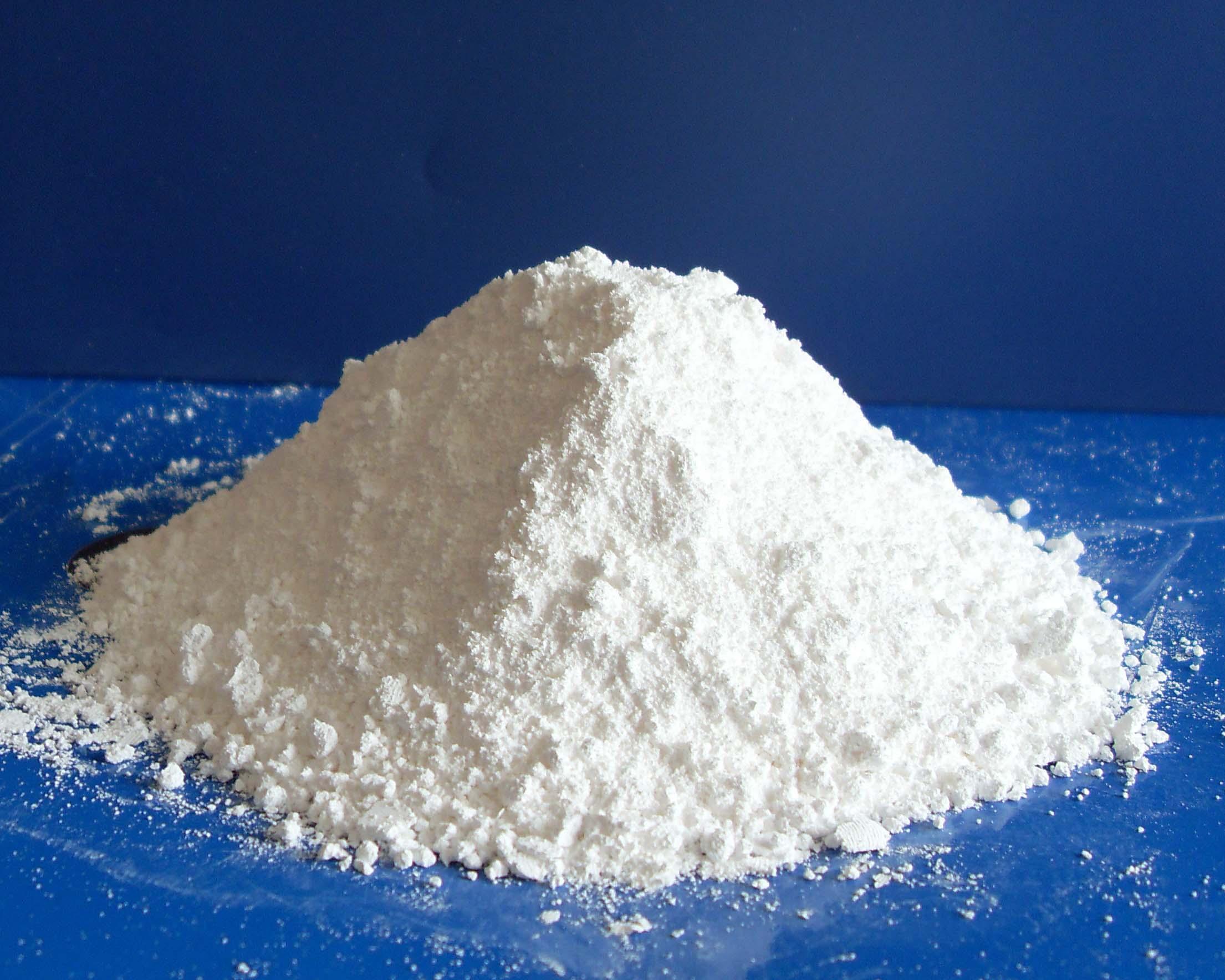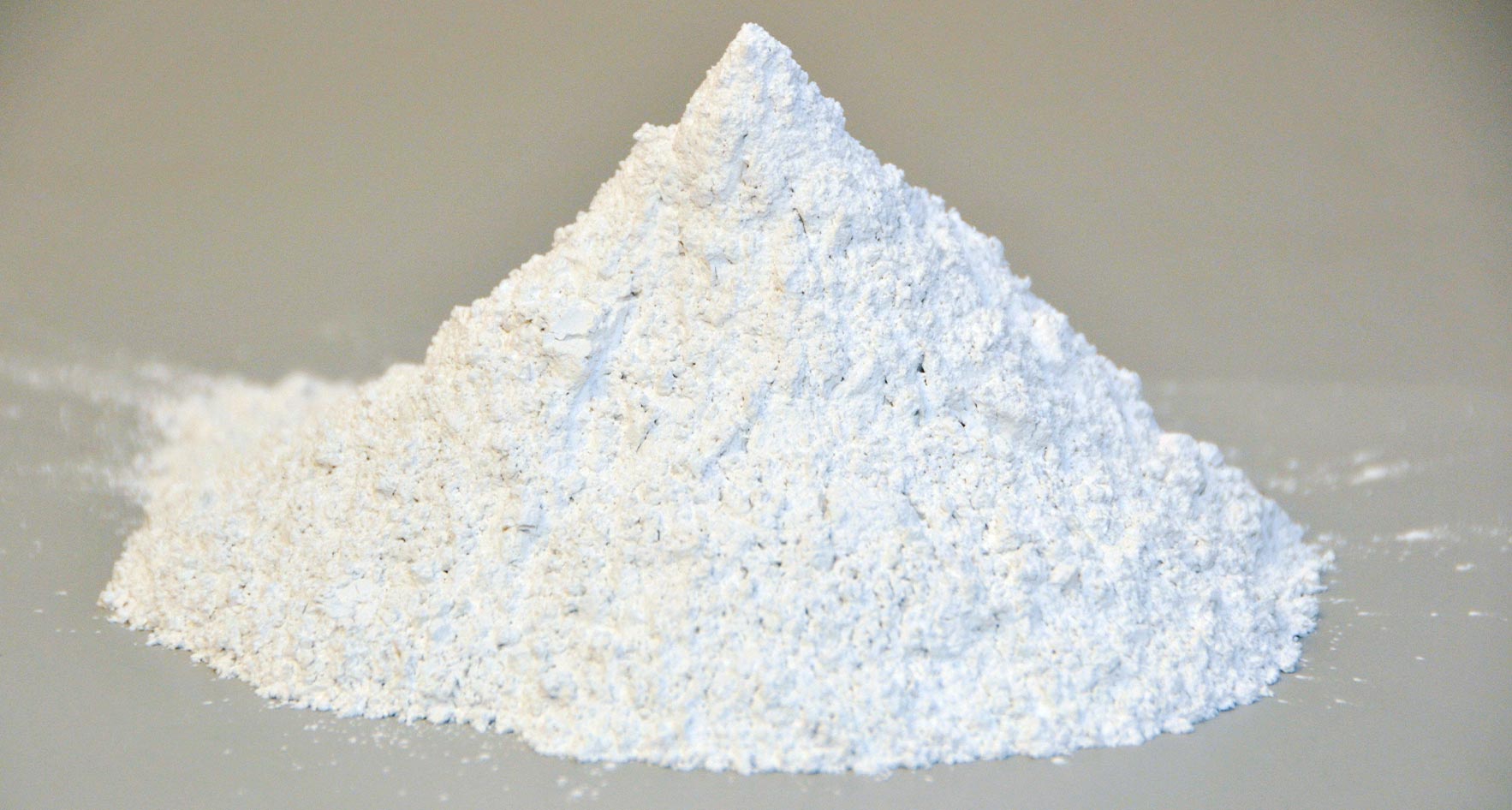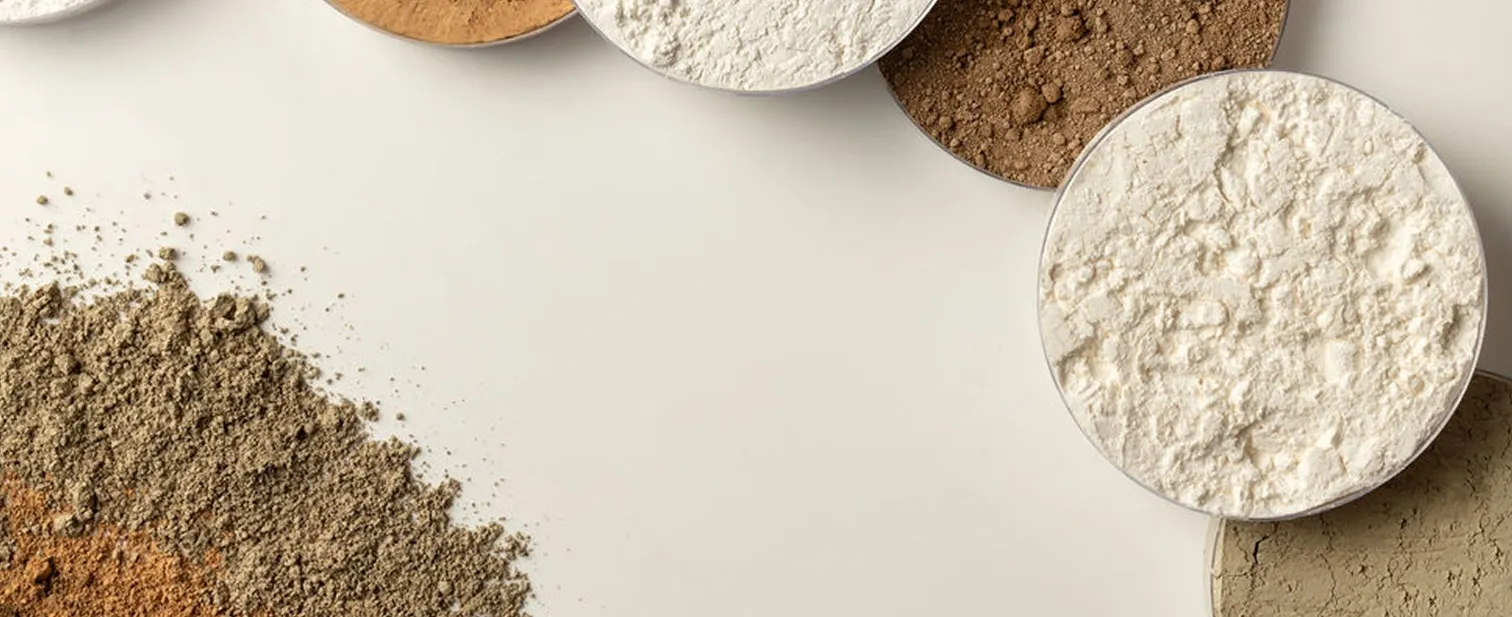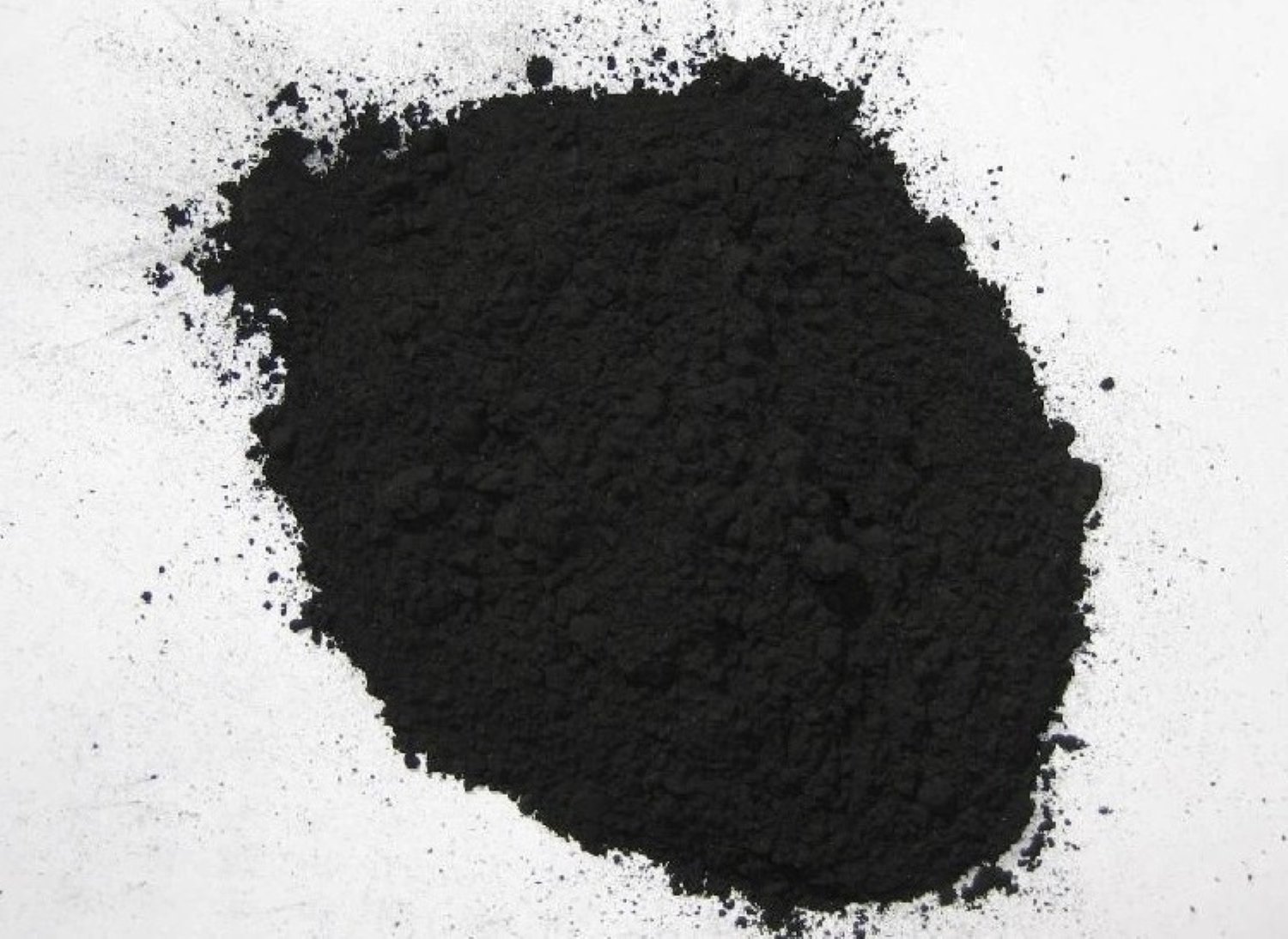Six major modification methods of nano zinc oxide
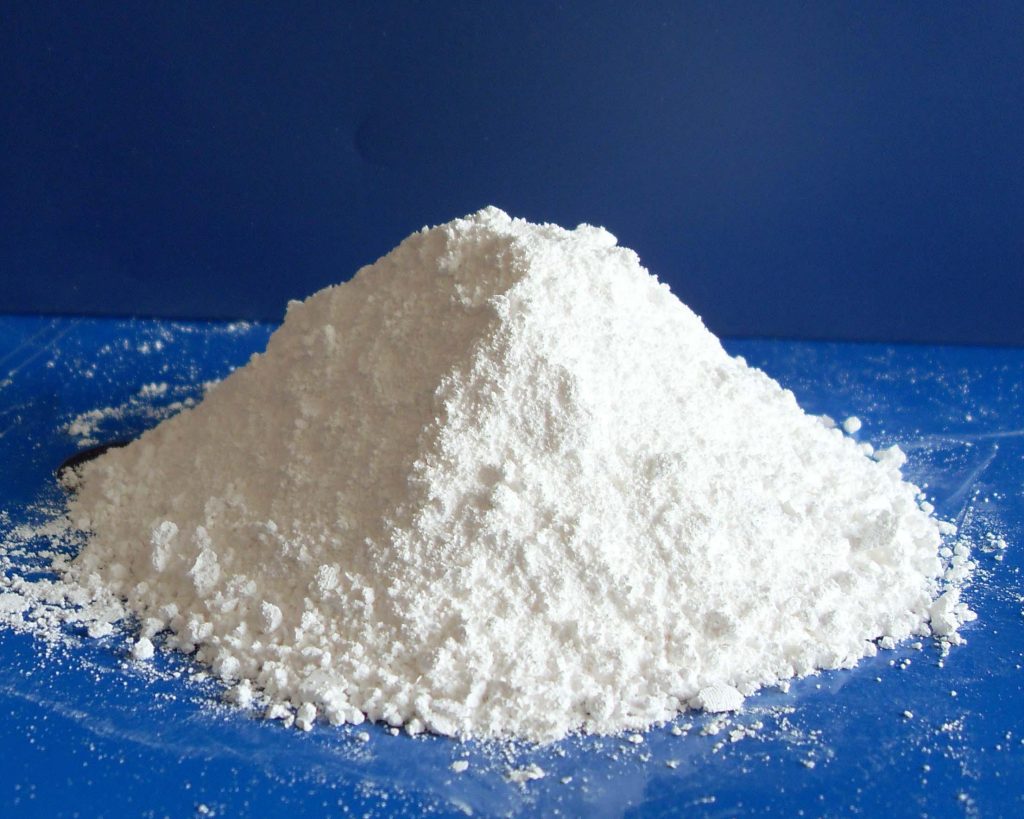
Nano zinc oxide is a new type of functional fine inorganic chemical material. Due to its small particle size and large specific surface area, it possesses unique physicochemical properties in chemistry, optics, biology, and electronics. It is widely used in antimicrobial additives, catalysts, rubber, dyes, inks, coatings, glass, piezoelectric ceramics, optoelectronics, and daily chemical applications, and holds great promise for development and utilization.
However, due to its large specific surface area and high specific surface energy, nanozinc oxide exhibits strong surface polarity, prone to self-agglomeration, and is difficult to disperse evenly in organic media, significantly limiting its nano-effect. Therefore, dispersion and surface modification of nanozinc oxide powders are essential treatments before nanomaterials can be applied in matrices.
1. Surfactant Modification
Surfactant modification involves the electrostatic interaction of surfactants to form an organic coating on the surface of nanomaterials, thereby improving their compatibility with organic matrices.
Although surfactant modification is a simple process, its effectiveness is generally poor, making it difficult to form a stable and robust coating on the surface of nanomaterials.
2. Mechanochemical Modification
Mechanochemical modification uses mechanical forces to alter the physical and chemical properties of nanomaterials, thereby enhancing their affinity and reactivity with other substances.
However, mechanochemical modification typically takes a long time and generally has poor results for nanomaterials.
3. High-energy Modification
High-energy modification involves the polymerization of organic compound monomers using plasma or radiation treatment, which then coats the nanomaterial's surface.
High-energy modification generally achieves better results than the previous two methods, but it has disadvantages such as high energy consumption and technical difficulty.
4. Esterification Modification
Esterification is a surface modification method that utilizes the carboxylic acid groups in modifiers such as higher fatty acids or unsaturated organic acids to react with hydroxyl groups on the surface of a nanomaterial to achieve esterification.
The esterification method is simple, but its modification effect is poor and it usually needs to be used in conjunction with a coupling agent.
5. Polymer Grafting
Polymer grafting involves first grafting a polymer monomer onto the surface of a nanomaterial, then initiating a polymerization reaction to extend the carbon chain, and finally allowing the polymer to coat the entire nanomaterial.
The polymer grafting method is complex to operate, and the modification effect is affected by various factors, making it difficult to achieve widespread application.
6. Coupling Agent Modification
A coupling agent is based on a silicon or metal element, with two different groups on either side that can connect to inorganic and organic matrices. These three components work together to achieve chemical modification of the nanomaterial. Nano-zinc oxide was modified with APS silane coupling agent. Both modified and unmodified nano-zinc oxide were dispersed in anhydrous ethanol to prepare printing inks for use as electron transport layer materials in photovoltaic cells. The performance of the two inks was then compared. The results showed that the modified nano-zinc oxide was better dispersed in anhydrous ethanol and remained agglomerated for 12 months. The electron transport layer material prepared with this agent exhibited higher electron transfer efficiency and could meet device performance standards at thinner thicknesses.
Nano-zinc oxide was chemically modified using silane coupling agents bearing glycyloxy and amino functional groups. Both modified and unmodified nano-zinc oxide were incorporated into epoxy coatings for weathering resistance testing. The results showed that the epoxy coatings incorporating nano-zinc oxide modified with the glycyloxy silane coupling agent exhibited significantly smaller changes in contact angle, color, and carbonyl groups after 450 hours of accelerated weathering, demonstrating significantly improved weathering resistance compared to epoxy coatings containing unmodified nano-zinc oxide.
The coupling agent method is the most promising modification method due to its simple process, good modification effect, and low cost.
Comparing the various surface modification methods mentioned above, and considering both modification effect and difficulty, it can be seen that the esterification method and the coupling agent method are more suitable for surface modification of nanomaterials.
Calcined alumina has become an important support for the development of the ceramic industry
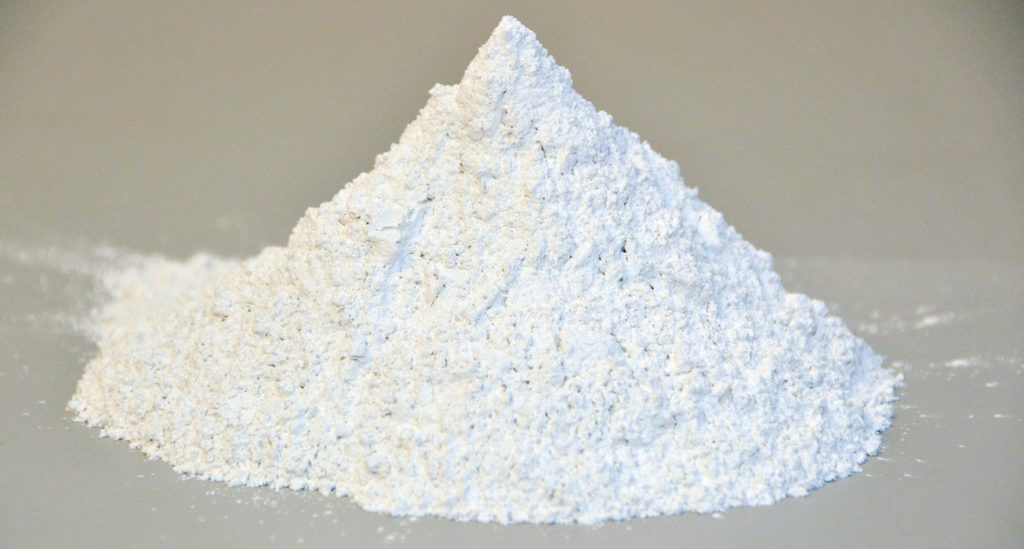
Calcined alumina, an inorganic non-metallic material made from industrial alumina calcined at high temperatures, possesses many remarkable properties. Firstly, its high hardness is one of its hallmarks. Its Mohs hardness reaches 9, second only to diamond. This makes ceramic products made from it exceptionally wear-resistant, maintaining a good appearance and structural stability over long-term use. Secondly, it possesses excellent high-temperature resistance, capable of withstanding temperatures exceeding thousands of degrees Celsius without deformation or damage, a characteristic that makes it particularly useful in the field of high-temperature ceramics. Furthermore, calcined alumina exhibits excellent chemical stability and is not susceptible to chemical reactions with other substances, ensuring the stable performance of ceramic products.
The Main Functions of Calcined Alumina in Glazes
Due to its high purity, high hardness, and excellent chemical stability, calcined alumina is widely used in glazes, particularly for household ceramics, architectural ceramics, and specialty ceramics. In practical applications, it not only significantly improves the hardness and wear resistance of the glaze surface, effectively reducing scratches and wear during use, thereby extending the service life of ceramic products; it also enhances the glaze's chemical stability, reducing the risk of acid and alkali corrosion, and improving the product's stain resistance and durability. Furthermore, the appropriate addition of calcined alumina can adjust the glaze's melting temperature and viscosity, improving its fluidity, avoiding defects such as pinholes and glaze shrinkage, and resulting in a smoother and more even glaze surface. Furthermore, its unique optical properties can help control the glaze's gloss, adding a delicate texture to matte glazes and enhancing the gloss uniformity of glossy glazes to meet the design requirements of various ceramic products.
In pigment applications, calcined alumina can provide a stable carrier for metal oxide pigments (such as iron oxide and cobalt oxide), inhibit the volatilization or diffusion of pigments at high temperatures, and prevent the glaze from blooming and fading. Especially in high-temperature glazes, it can lock the color concentration and tone consistency, helping to achieve rich and lasting ceramic decorative effects. It is a key support for promoting the development of ceramic colored glazes towards high performance and high stability.
Action mechanism of rare earth oxides in magnesia-calcium refractories
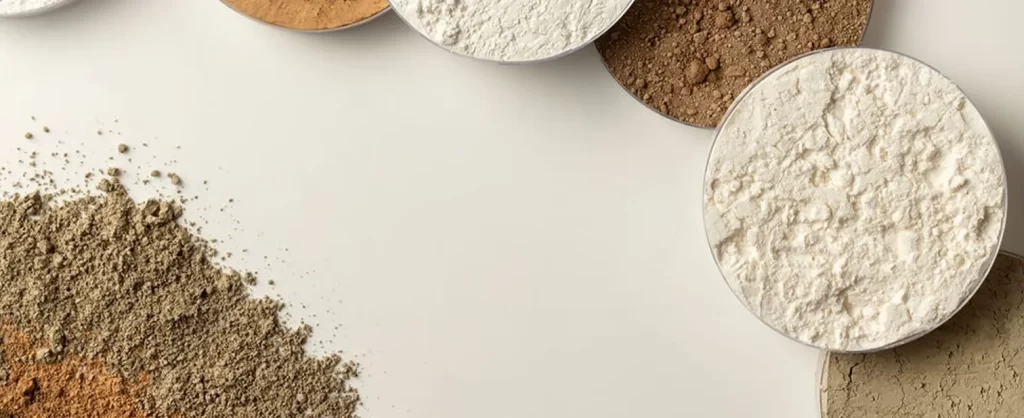
The properties of an element determine its performance, and rare earth elements are no exception. Their performance is closely related to their properties. The primary factors determining their physical properties (such as hardness, crystal structure, and melting point) are their atomic and ionic radii. Rare earth metals have high melting points that increase with increasing atomic number, though this trend is not very consistent. Rare earth elements typically lose their outer s and d orbital electrons, forming a +3 valence state, thus forming rare earth oxides. This +3 valence state is the characteristic oxidation state of rare earth elements. Rare earth oxides have melting points exceeding 2000°C and are nonvolatile. They are mixed conductive semiconductors with both electronic and ionic conductivity. Electronic conductivity refers to the conduction of electrons and holes, while ionic conductivity refers to the movement of oxygen ions within oxygen vacancies, essentially oxygen ion conduction.
In addition to using rare earth elements directly as matrix components or functional centers based on the optical and magnetic properties of 4f electrons, their chemical properties, such as their chemical reactivity and large ionic radius, can also be leveraged to modify the material's microstructure, thereby improving its performance. Rare earth-doped functional semiconductor ceramics are a major example. Adding rare earth oxides to refractory materials not only enhances and improves the material's inherent strength and toughness, but also reduces sintering temperatures and production costs.
Due to their non-toxicity, high efficiency, and unique physical and chemical properties, rare earth compounds are increasingly being used in a wide range of applications, evolving from primary applications in metallurgy, chemical engineering, and ceramics to advanced applications in high-performance composite materials such as hydrogen storage and luminescence. Research on the application of rare earth oxides in ceramic materials has attracted widespread attention. Studies have shown that the addition of rare earth oxides significantly improves the performance of ceramic materials, ensuring their quality and performance for diverse applications. Furthermore, rare earth oxides, as fluxes, can promote sintering, improve the ceramic's microstructure, and provide doping and modification.
Rare earth oxides, as additives, improve the properties of refractory materials, demonstrating their unique and significant benefits in enhancing performance and imparting new functions. Adding small amounts of rare earth oxides increases the density of magnesia-calcium refractories, improving their density and corrosion resistance.
Rare earth oxides are used as additives in magnesia-calcium refractories to improve their sinterability, compactness, microstructure, crystalline phase composition, room-temperature flexural strength, and fracture toughness, thereby meeting market performance requirements for magnesia-calcium refractories. There are three main mechanisms for adding rare earth oxides to magnesium-calcium refractory materials. (1) Additives as flux can promote sintering. The sintering temperature of magnesium-calcium refractory materials is generally high, and there are many factors that are not conducive to densification during the sintering process. Adding rare earth oxides can solve this problem. Due to the unique properties of rare earth oxides, adding rare earth oxides to refractory materials can change their internal structure, thereby promoting the sintering of magnesium-calcium refractory materials. (2) Rare earth oxides can improve the microstructure of magnesium-calcium refractory materials. The addition of rare earth oxides can improve the internal microstructure of the refractory materials. This reduces the grain boundary migration rate, inhibits grain growth, and is conducive to the formation of a dense structure. (3) Doping modification of rare earth oxides. Doping rare earth oxides in the process of preparing refractory materials will cause the sample's crystal form to change, thereby causing its volume to change. This change can greatly improve its bending resistance and toughness. Research on adding additives to improve and optimize the relevant properties of materials in the preparation process of refractory materials has always attracted people's attention. In the current research, the main focus is on the problem that magnesia calcium sand raw materials are difficult to sinter and easy to hydrate. The main additives include ZrO2, Fe2O3, Al2O3, rare earth oxides, etc.
Application of barium sulfate in 10 industries
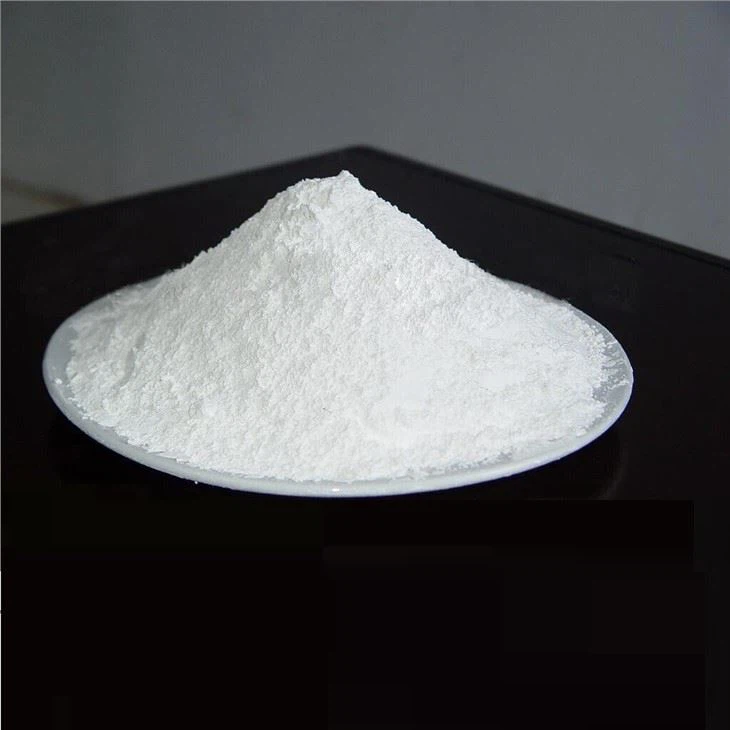
Barium sulfate is an unfamiliar term to most people, and even those unfamiliar with chemistry might consider it a dangerous chemical. However, barium sulfate is ubiquitous in our daily lives, often appearing in the form of manufactured products. For example, most plastic products in our homes, air conditioners, plastic car parts, supermarket bags, paints, coatings, and glass may all contain barium sulfate.
Application of barium sulfate in ten major industries
1. Petroleum Industry: 200-mesh and 325-mesh barite powder for oil and gas field drilling mud additives.
2. Chemical Industry: Barite salt plants use barite as a raw material to produce lithopone, precipitated barium sulfate, and barium carbonate.
3. Paint and Coating Industry: Barite can be used as a filler in paints and coatings, replacing more expensive raw materials such as precipitated barium sulfate, lithopone, titanium dioxide, and activated silica. It is suitable for controlling paint viscosity and achieving a bright and stable color.
4. Plastics Industry: Barite can be used as a filler in ABS plastic raw materials, adding a bright gloss while also improving strength, stiffness, and wear resistance.
5. Rubber Industry: Barite powder with a mesh size below 500 can be widely used as a filler in rubber products, reducing costs while improving hardness, acid and alkali resistance, and water resistance. It also provides excellent reinforcement for natural and synthetic rubber.
6. Paper Industry: Highly fine barite powder can be used as a filler and coating filler in whiteboard and coated paper to enhance whiteness and surface coverage. Product specifications: 325 mesh, 400 mesh, 600 mesh, 800 mesh, 1250 mesh, 1500 mesh, 2000 mesh, 2500 mesh, 3000 mesh, 4000 mesh, 5000 mesh, 6000 mesh.
7. Cement Industry
Adding barite and fluorite composite mineralizers to cement production can increase the whiteness and strength of cement. It can be used to make barium cement, barite mortar, and barite concrete, which can be used in buildings requiring X-ray protection.
8. Glass Industry
It can be used as a deoxidizer, clarifier, and flux to increase the optical stability, gloss, and strength of glass.
9. Construction Industry
It can be used as a concrete aggregate, paving material, to reinforce buried pipes in swampy areas, and as a replacement for lead sheeting in shielding at nuclear facilities, atomic power plants, and X-ray laboratories, extending the life of road surfaces.
10. Ceramic Industry
Barite powder can also be used as a high-quality filler in ceramics and other industries. Currently, the use of barium sulfate in the ceramics industry is decreasing, while the use of wollastonite powder is increasing.
The applications in the ten industries mentioned above are all critical and essential to people's livelihoods. This demonstrates the significant role and wide range of applications of barium sulfate, an inorganic non-metallic mineral powder.
Widely used in the ceramic industry - Black Talc
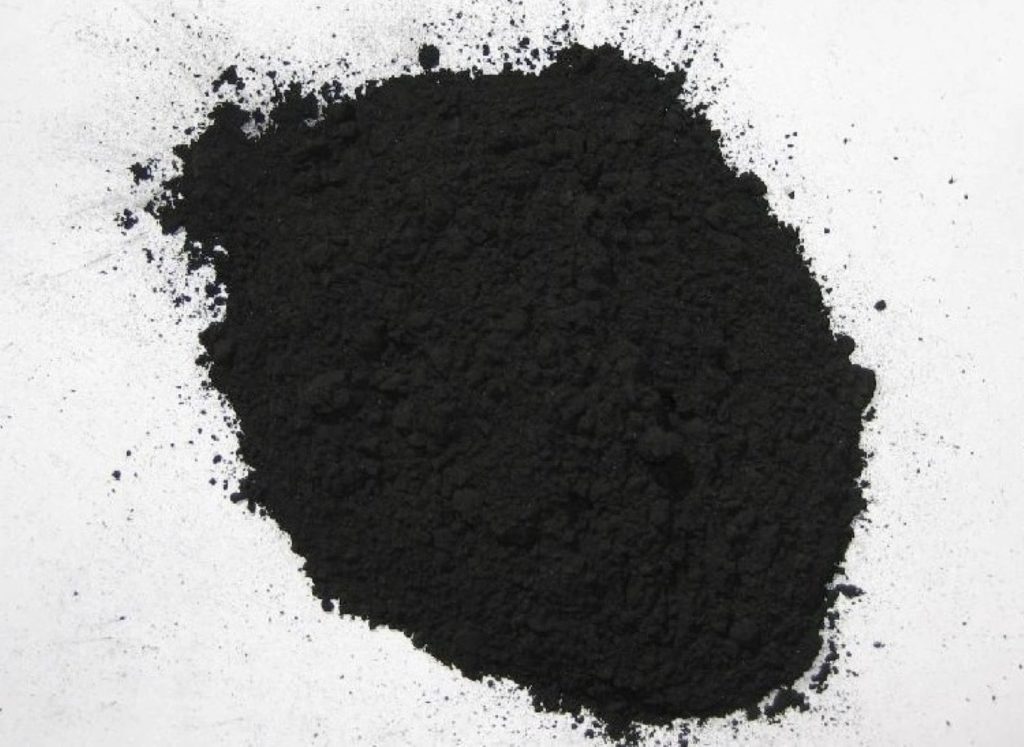
Black talc is typically composed of talc, quartz, calcite, sepiolite, and organic carbon, and ranges from black to grayish-black in color.
The main chemical components of black talc are magnesium oxide, silicon oxide, aluminum oxide, iron oxide, titanium oxide, sodium oxide, and potassium oxide.
Application of black talc
(1) Raw materials for the ceramic industry
The processing performance of black talc is irreplaceable by other materials. High white porcelain and bone porcelain fired with black talc are also called talc porcelain or magnesium porcelain.
(2) Fillers for rubber products
As a filler for rubber products, black talc powder has good dispersibility and certain reinforcing properties.
(3) Fillers for plastic products
Plastic fillers use two types of black talc products, one is black talc powder and the other is calcined talc powder.
(4) Fillers for coatings
Because talc has a soft texture, low abrasiveness, and good suspension and dispersibility, it has begun to be used in coatings.
(5) Others
In addition to being widely used in the above industries, black talc can also be used as a filler and adsorbent in industries such as waterproofing raw materials, fertilizers, pesticides and fine chemicals.
Calcination and whitening of black talc
The main purpose of black talc processing is to improve whiteness. Black talc's natural whiteness is around 50% or even lower, limiting its widespread use to applications in industries like ceramics and rubber. As a filler, talc must possess a high degree of whiteness. To expand its application, appropriate measures must be taken to improve its whiteness. Calcination, which then increases its whiteness and alters its physical properties, enhances its added value.
Currently, the primary method for improving the whiteness of black talc is calcination. The primary purpose of calcination is to remove organic carbon from the talc, achieving a whiteness that meets industrial requirements and expands its application. After calcination, the whiteness reaches as high as 95%, resulting in excellent fire resistance, heat resistance, insulation, adhesion, adsorption, and lubrication properties. It is suitable for applications in papermaking, ceramics, plastics, paints, coatings, pharmaceuticals, cosmetics, aerospace, machinery, electronics, computers, and architectural decoration.
Black Talc Calcination Process
Calcination and grinding are two processes used in the high-whiteness and ultrafine processing of black talc. Depending on the order in which they are performed, there are two main processes: calcination followed by ultrafine grinding, and ultrafine grinding followed by calcination.
Calcination-before-grinding Process
The advantages are simplicity and low processing costs. However, after ultrafine grinding and classification, the resulting talc product has a whiteness of approximately 85%, falling short of the desired 95% whiteness after calcination.
Grinding-before-calcination Process
The advantages are better whiteness uniformity after calcination, with a whiteness of over 92%. However, this process is prone to agglomeration or a reddish-white smearing.
Applications of Silicon Carbide
![]()
Silicon carbide has significant characteristics such as high bandgap width, high breakdown electric field, high thermal conductivity, and high electron saturation drift rate. It can meet the device requirements of scientific and technological development for complex scenarios such as high temperature, high power, high voltage, and high frequency. It has been widely used in power electronics, new energy vehicles, energy storage, intelligent manufacturing, photovoltaics, rail transit and other fields. It can be said that "everything can be silicon carbide."
Applications of Silicon Carbide in New Energy Vehicles
In the new energy vehicle sector, the application of silicon carbide technology is becoming key to improving the performance of electric and hybrid vehicles. Silicon carbide devices, with their high thermal conductivity, high breakdown electric field strength, and excellent mechanical properties, significantly enhance the efficiency and reliability of electric drive systems, charging systems, and energy management systems.
Applications of Silicon Carbide in Intelligent Driving and the Internet of Vehicles
Amid the rapid development of intelligent driving and the Internet of Vehicles, silicon carbide technology, with its superior performance, is gradually penetrating key areas such as sensor systems, data processing units, and communication modules, significantly improving system performance and reliability.
Applications of Silicon Carbide in Photovoltaic Systems
In photovoltaic systems, core components such as inverters, MPPT controllers, and energy storage conversion modules place multiple demands on power devices, including high efficiency, high voltage resistance, high-temperature operation, and miniaturization. Traditional silicon devices experience significant efficiency degradation in high-voltage and high-temperature environments, making them unable to meet the growing power density requirements of photovoltaic power plants.
Applications of Silicon Carbide in 5G Communications
In applications such as wireless communications and radar systems, RF devices serve as the core of signal transmission and processing, and their performance is crucial to system stability. RF devices based on semi-insulating silicon carbide, due to their wide bandgap properties, offer advantages such as low loss, high bandwidth, and high power density, making them a key enabler for next-generation 5G and military communications systems.
Applications of Silicon Carbide in Power Grids
Silicon carbide can significantly enhance power grids by improving the efficiency and capacity of power transmission and distribution. Silicon carbide substrates can operate at higher temperatures, voltages, and frequencies, making components such as converters, switchgear, and transformers smaller and more efficient, thereby reducing energy loss and improving power quality.
Applications of Silicon Carbide in Low-Altitude Aircraft
New aircraft, represented by eVTOL (electric vertical take-off and landing), have become a focal point in the global low-altitude economy and are expected to become a new trillion-dollar industry. SiC MOSFET devices, through their efficiency leaps and lightweight innovations, are driving eVTOL from the experimental stage to commercial operation. SiC MOSFET devices have become a core component of eVTOL power systems, and their improved performance and reduced costs will propel the industry into large-scale application.
Applications of Silicon Carbide in Artificial Intelligence (AI)
Electricity is becoming the latest bottleneck threatening the advancement of artificial intelligence (AI). The rapidly growing computing power of AI is accompanied by rising energy consumption, which is significantly impacting normal social energy demand. Taking US data centers as an example, by 2030 they could consume up to 9% of the nation's electricity generation, roughly equivalent to the annual output of 40 medium-sized nuclear power plants.
With such a large scale of electricity consumption, even a 0.1% reduction in energy consumption is a significant factor. To help address this pressing electricity shortage, the global industry ecosystem is actively exploring all possible options. For example, ON Semiconductor has developed a new series of silicon trench power MOSFETs and SiC MOSFETs.
Application of Silicon Carbide in the Robotics Industry
Robots and new energy vehicles share a high degree of similarity in their technical architecture. Automotive chips can be transferred to robotics applications, but they must adapt to different performance requirements. For example, power semiconductors, in addition to automotive systems, also have technical capabilities applicable to motor drive controllers for robotic joints. The demand for efficient power control in this emerging robotics market is rapidly growing.
Alumina, the "savior" of Cathode battery materials
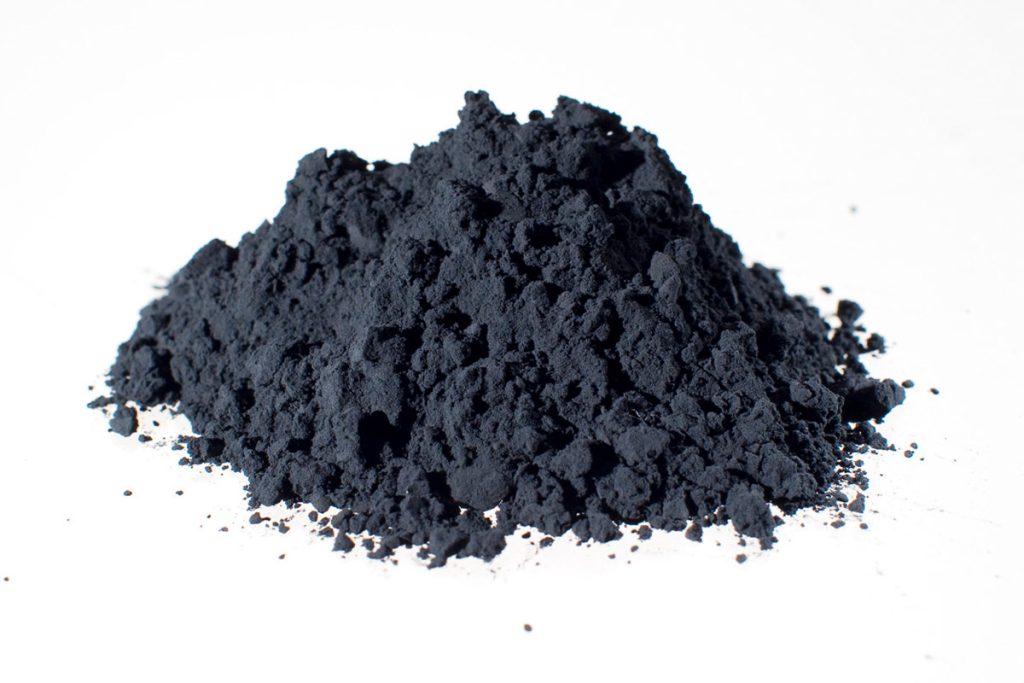
The basic structure of lithium-ion batteries covers positive electrode, negative electrode, electrolyte, separator and battery shell. The positive electrode material is the core material in lithium-ion batteries, which determines the energy density, voltage platform, cycle life and safety of the battery.
At present, although lithium cobalt oxide (LiCoO2), lithium manganese oxide (LiMn2O4), lithium iron phosphate (LiFePO4) and ternary materials (Li-Ni-Co-Mn-O) are four commercialized positive electrode materials for lithium-ion batteries, they have certain defects in safety, cycle performance, capacity retention and other aspects. In order to improve the stability of positive electrode materials, researchers use different modification methods, such as doping, surface coating and two methods in common.
How does alumina improve positive electrode performance?
Alumina coating on positive electrode materials can effectively improve the cycle stability, cycle life and thermal stability of positive electrode materials. The main effects of Al2O3 on positive electrode materials are:
(1) Hydrogen fluoride (HF) scavenger
LiPF6 is a commonly used electrolyte in electrolytes. Under high voltage, lithium hexafluorophosphate (LiPF6) will react with trace amounts of water to generate HF.
(2) Physical protection barrier
Coating a layer of Al2O3 on the surface of the positive electrode material can isolate the positive electrode material from the electrolyte and inhibit the occurrence of harmful side reactions between the positive electrode material and the electrolyte.
(3) Improving the thermal stability of positive electrode materials
Thermal stability is one of the key factors in evaluating the performance of lithium-ion batteries. During the charge and discharge process of lithium batteries, the release of lattice oxygen in the positive electrode material will cause the electrolyte to oxidize, thereby reducing its thermal stability.
(4) Improving the diffusion rate of lithium ions
Although aluminum oxide is not a good conductor of electrons and ions, it can react with residual lithium on the surface of the positive electrode material during the charge and discharge process to generate LiAlO2, which is a good conductor of ions and can increase the diffusion rate of lithium ions. This is mainly because LiAlO2 reduces the diffusion energy barrier of lithium ions.
(5) Reaction with LiPF6 to generate electrolyte additive LiPO2F2
The aluminum oxide coated on the surface of the positive electrode material can react with the lithium salt (LiPF6) in the electrolyte to generate lithium difluorophosphate (LiPO2F2), which is a stable electrolyte additive that can significantly improve the cycle stability, safety and rate performance of the positive electrode material.
(6) Inhibition of Jahn-Teller effect
The Jahn-Teller effect is the main cause of the dissolution of Mn ions in the positive electrode material, which may cause the collapse of the positive electrode material structure and hinder the diffusion of lithium ions, thereby causing the electrochemical performance of the positive electrode material to decrease.
Five major coating technologies
Impregnation method: Add the positive electrode material to the solution or sol containing the aluminum precursor to form a uniform slurry, and then dry and calcine to form an alumina-coated positive electrode material.
Precipitation method: Mix the positive electrode material and a solution such as aluminum nitrate or aluminum chloride evenly, adjust the pH value of the mixed solution to form a coating layer on the surface of the positive electrode material, and finally generate an alumina-coated positive electrode material by filtering, washing, drying and heat treatment.
Dry coating process: Alumina and positive electrode materials can be directly mixed to form a rough coating layer on the surface of the positive electrode material. Although uniform coating cannot be achieved on the surface of the positive electrode material, it still has a positive effect on the improvement of the electrochemical performance of the positive electrode material.
Sputtering method: The sputtering method uses Ar+ ions to bombard the target material (Al), so that Al atoms are sputtered and deposited on the surface of the positive electrode material.
Atomic layer deposition technology (ALD): Using trimethylaluminum and other materials as the aluminum source, aluminum oxide is coated on the surface of the positive electrode material. The thickness can be precisely controlled, and the increase in coating thickness is achieved by increasing the number of ALD cycles.
The quality of metal 3D printed parts depends on the powder

As raw material, the quality of metal powder determines the quality of the final product to a large extent. In general, the cleanliness, morphology and particle size distribution of the powder are the key factors that restrict the forming performance of the parts.
The morphology of the powder directly affects the bulk density and fluidity, which in turn affects the powder feeding and spreading process and the final performance of the parts. In powder bed fusion additive manufacturing, the powder spreading mechanism spreads the powder particles evenly in the forming area, and good fluidity is the key to obtaining a uniform and flat powder bed. Spherical and near-spherical powders have good fluidity, high bulk density, high density and uniform structure, and are the preferred raw material powders for powder bed fusion additive manufacturing.
However, if hollow powder and satellite powder exist in spherical and near-spherical powders, the final performance of the parts will be reduced. Hollow powder accounts for a higher proportion in powders with a particle size greater than 70µm, which will cause defects such as pores in the formed parts that are difficult to eliminate; satellite powder will reduce the fluidity of the powder and hinder the uniform accumulation of the powder during the spreading of continuous powder layers, thereby causing part defects. Therefore, metal powders for powder bed fusion additive manufacturing should minimize the proportion of hollow powder and satellite powder in the powder raw materials.
Powder particle size distribution is used to characterize the composition and changes of particles with different particle sizes in the powder particle system, and is an important parameter used to describe the characteristics of powder particles.
The particle size of the powder directly affects the powder spreading quality, forming speed, forming accuracy and organizational uniformity of the additive manufacturing process. For different processes, the selected powder particle size is different. Generally speaking, laser selective melting technology (SLM) selects powders with a particle size of 15~45µm, and electron beam selective melting technology (SEBM) selects powders with a particle size of 45~106µm.
From the perspective of thermodynamics and kinetics, the smaller the powder particles, the larger their specific surface area and the greater the sintering driving force, that is, small particles of powder are conducive to the forming of parts. However, powders with too fine particles will lead to reduced fluidity, loose density, and electrical conductivity of the powder, and the powder's formability will deteriorate, and spheroidization is prone to occur during the printing process. Too coarse powder particle size will reduce the powder's sintering activity, powder spreading uniformity, and forming accuracy.
Therefore, according to the performance requirements of the final parts, the coarse and fine powders are properly matched to improve the bulk density and fluidity of the powders, which is conducive to the powder bed fusion additive manufacturing. The researchers believe that under the general particle size range of the laser powder bed fusion additive manufacturing process, the use of a wider particle size distribution can increase the filling of small-sized particles into the gaps between large-sized particles and improve the powder bed density during the powder laying process.
From the current research status of the influence of changes in powder characteristics on forming quality, changes in powder size, morphology and surface state affect the powder spreading and forming quality of the powder. In terms of forming density, reasonable particle size distribution, higher sphericity and reduced cohesion between particles can improve the loose density and powder spreading quality of the powder, further reduce the number of pores and unfused defects in the forming specimen, and improve the forming density.
Modification - making nano-alumina more perfect
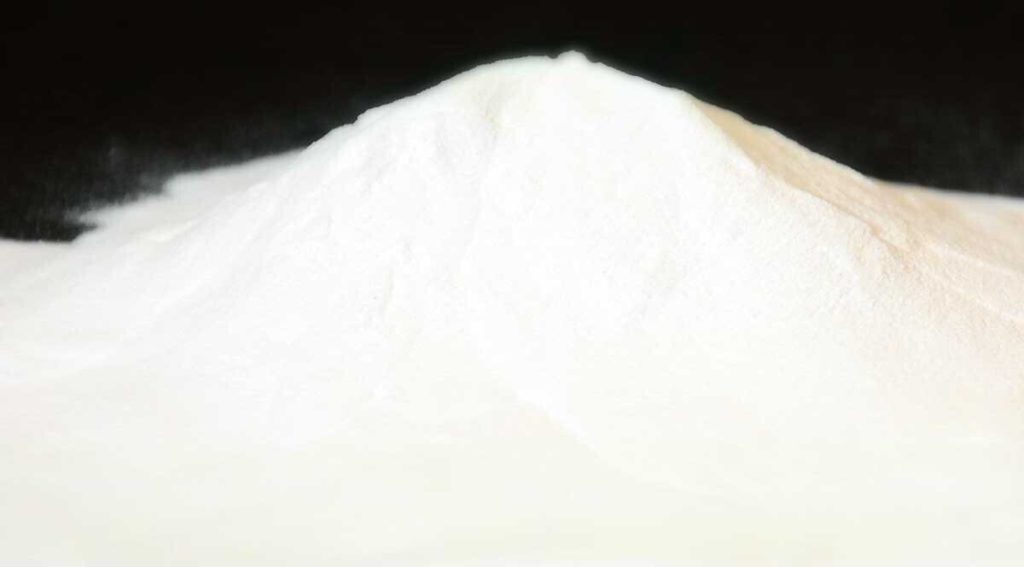
Nano-alumina is a new type of high-functional fine inorganic material. Since the nano-alumina powder was produced in the mid-1980s, people have been deepening their understanding of this high-tech material and have discovered many of its characteristics, such as high hardness, high strength, heat resistance, corrosion resistance and other excellent characteristics. Therefore, it is widely used in aerospace, national defense, chemical industry, microelectronics and other fields.
In the practical application of nano-alumina, the modification of powder has always been a very important work.
Why is it modified?
First of all, as a nanomaterial with many characteristics, nano-alumina is very easy to agglomerate due to its extremely small particle size and large surface energy. If the agglomeration phenomenon is particularly serious, it will have a great impact on the characteristics of nano-material alumina.
In addition, nano-alumina can be used as a biofilm for medical research on biological drugs, but the surface charge of the crystal with balanced surface charge is unevenly distributed due to the presence of lattice defects. The accumulation of surface charge defects and space charge areas at the micron level leads to a grid-like dipole moment. When biological materials contact the surface of such powders, enrichment will occur, resulting in pore blockage and membrane pollution.
Furthermore, the insulation and high strength of alumina are used as fillers in materials such as coatings and rubber to improve the hardness, insulation, ductility, and wear resistance of the materials. However, alumina is a polar substance and has poor compatibility with non-polar polymer materials.
Therefore, the surface modification of alumina has attracted much attention.
Surface modification refers to the surface treatment of solid particles by physical or chemical methods, that is, the process of purposefully changing the physical and chemical properties and surface morphology of the particle surface according to application needs. At present, there are two most practical modification methods. The first method is called surface organic modification because it mainly uses organic modifiers, and the second method is inorganic coating modification or surface coating modification.
Surface organic modification
The purpose of surface organic modification of ultrafine powder particles is to make the particle surface hydrophobic by linking the corresponding organic groups, thereby improving its dispersion performance and interfacial compatibility in organic matrices such as resins, rubbers, and paints, and thereby improving the product processing process and the comprehensive properties of composite material mechanics. According to the chemical structure type, modifiers are divided into higher fatty acids or their salts, lower fatty acids and coupling agents.
(1) Physical coating modification
Physical coating modification or coating treatment modification is a method of using organic matter (as long as it is a polymer, resin, surfactant, water-soluble or oil-soluble polymer compound and fatty acid soap, etc.) to coat the surface of particles to achieve the purpose of modification. It is a process for simply modifying the surface of particles.
(2) Surface chemical modification
Surface chemical modification is achieved by chemical reaction or chemical adsorption between the surface modifier and the particle surface. It is the most widely used modification method in production.
(3) Grafting modification
Grafting modification is a modification process in which monomer olefins or polyolefins are introduced into the surface of powder under certain external excitation conditions. Sometimes, it is necessary to excite the monomer olefin after the introduction to polymerize the monomer olefin attached to the surface.
Surface coating modification
Surface coating modification refers to the modification technology of uniformly coating the surface of ultrafine alumina powder particles with smaller solid particles or solid films, thereby changing the surface composition, structure, appearance and original function of the particles.
According to the environment and form of the coating reaction, the nature and method of the modified coating between particles, the surface coating modification methods can be divided into chemical precipitation method, hydrolysis coating method, sol-gel method, solvent evaporation method, mechanochemical method and gas phase method. Among them, the first three methods are all solution reaction methods, that is, the soluble salt solution is precipitated by precipitating agents and hydrolysis, and then coated on the surface of the particle powder to be modified.
What are the advantages of using excellent filler barium sulfate in nylon modification?

Barium Sulfate, also known as barite, is a colorless, odorless, non-toxic inorganic compound with the chemical formula BaSO4. It is known for its high density, high whiteness, good chemical stability and acid and alkali resistance, and is insoluble in water and most acids. These characteristics make barium sulfate widely used in many industrial fields, especially in the field of plastic modification, especially in the modification of nylon (PA), where barium sulfate shows unique advantages.
Nylon, as a polymer material with excellent mechanical properties, wear resistance, acid and alkali resistance and self-lubrication, is widely used in many industrial fields. However, the disadvantages of nylon such as high water absorption and poor dimensional stability limit its application range. Therefore, it is particularly important to modify nylon to improve its performance. As a neutral filler, barium sulfate plays multiple roles in nylon modification, such as strengthening, toughening and improving gloss.
Reinforcement effect
As an inorganic filler, the addition of barium sulfate can significantly improve the rigidity (modulus) and hardness of nylon, and is suitable for industrial parts that require high modulus (such as gears and bearings). Relevant experimental results show that with the increase of nano-barium sulfate content, the bending modulus and tensile modulus of nylon are improved. In particular, when the mass fraction of nano-barium sulfate is a certain value (such as 3%), the mechanical properties of nylon reach the best. This reinforcement effect is mainly due to the rigidity of barium sulfate and its good interface bonding with the nylon matrix.
Dimensional stability: reduce the shrinkage and warping of nylon during processing or use, and improve dimensional accuracy.
Heat deformation temperature (HDT): by limiting the movement of polymer chains, improve the thermal stability of materials, and expand the application of nylon in high temperature environments (such as automobile engine parts).
Toughening effect
In addition to the reinforcement effect, barium sulfate can also have a toughening effect on nylon. The interaction between nano-barium sulfate particles and the nylon matrix forms an elastic transition layer, which can effectively transmit and relax the stress on the interface, thereby absorbing and dispersing the external impact energy and improving the toughness of the material. However, it is worth noting that when the content of barium sulfate increases to a certain extent, the performance of the material will be reduced due to the occurrence of agglomeration.
Improved gloss
Barium sulfate has a strong light reflection ability in the ultraviolet and infrared wavelength ranges, which enables it to show high brightness in plastic coloring formulas. When barium sulfate of appropriate particle size is selected to be filled in nylon, the surface gloss of the processed products can be significantly improved. In addition, the refractive index of barium sulfate is similar to that of polymers such as nylon, so it can retain the brightness and hue of the coloring pigment.
Practical application
In practical applications, barium sulfate is usually uniformly dispersed into the nylon matrix in the form of nanometers by melt blending. This method utilizes the size effect, large specific surface area and strong interfacial force of nano-barium sulfate, and perfectly combines the rigidity, dimensional stability and thermal stability of barium sulfate with the toughness, processability and dielectric properties of nylon, thereby obtaining excellent comprehensive performance.
Barium sulfate has shown significant enhancement, toughening and gloss improvement in nylon modification. By rationally controlling the content and particle size distribution of barium sulfate, it is possible to optimize the mechanical properties of nylon, improve the durability and aesthetics of the product, balance performance and cost, optimize the formula design for specific scenarios, and thus broaden the application range of nylon.

